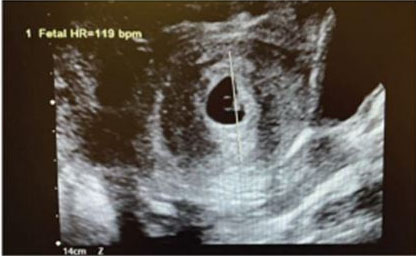 |
Case Report
Emergent use of a central venous catheter placed in the internal mammary vein
1 Resident Physician, Internal Medicine, University of North Carolina, Chapel Hill, North Carolina, United States
2 Professor, Division of Pulmonology and Critical Care, University of North Carolina, Chapel Hill, North Carolina, United States
Address correspondence to:
Richard Jensen
MD, 126 MacNider Hall, Campus Box #7005, Chapel Hill, North Carolina,
United States
Message to Corresponding Author
Article ID: 100127Z06RJ2024
Access full text article on other devices

Access PDF of article on other devices

How to cite this article
Jensen R, Henderson AG. Emergent use of a central venous catheter placed in the internal mammary vein. Case Rep Int 2024;13(1):12–15.ABSTRACT
Introduction: Central venous catheter (CVC) insertion plays an important role in critical care medicine, often utilized for vasopressor administration, volume resuscitation, reliable venous access, and central venous pressure monitoring. However, there are potential complications associated with placement, including arterial cannulation, catheter fragmentation, venous injury, pneumothorax, and malposition into a tributary vessel.
Case Report: A 35-year-old woman with a history of severe psoriasis with recurrent superinfection, and right internal jugular (RIJ) venous thrombosis was transferred to the intensive care unit with septic shock. A CVC was inserted via left internal jugular (LIJ) to facilitate antimicrobial administration and continued vasopressor support, as it was patent by bedside ultrasound. The patient was asymptomatic during and after CVC placement. However, post-procedure chest X-ray demonstrated a CVC projecting directly inferiorly, ending over the left hemidiaphragm. After review of recent cross-sectional imaging, physical examination, blood gas assessment, and ultrasound evaluation, the catheter was thought to be within the internal mammary vein (IMV). Given the patient’s instability and being asymptomatic after line placement with the CVC functioning normally, the decision was made to temporarily use the line. The next day, its placement was confirmed by using computed tomography (CT).
Conclusion: Miscannulation of a tributary vessel during CVC placement can cause significant morbidity and even mortality. However, it has been postulated that a line placed within the IMV could be used safely in the emergent setting. Our case demonstrates the safe utilization of a CVC within the IMV and provides a reasonable framework for approaching a misplaced LIJ CVC.
Keywords: Central line, Central venous catheterization, Internal mammary vein, Miscannulation
SUPPORTING INFORMATION
Author Contributions
Richard Jensen - Substantial contributions to conception and design, Acquisition of data, Analysis of data, Interpretation of data, Drafting the article, Revising it critically for important intellectual content, Final approval of the version to be published
Ashley G Henderson - Substantial contributions to conception and design, Acquisition of data, Analysis of data, Interpretation of data, Drafting the article, Revising it critically for important intellectual content, Final approval of the version to be published
Guaranter of SubmissionThe corresponding author is the guarantor of submission.
Source of SupportNone
Consent StatementWritten informed consent was obtained from the patient for publication of this article.
Data AvailabilityAll relevant data are within the paper and its Supporting Information files.
Conflict of InterestAuthors declare no conflict of interest.
Copyright© 2024 Richard Jensen et al. This article is distributed under the terms of Creative Commons Attribution License which permits unrestricted use, distribution and reproduction in any medium provided the original author(s) and original publisher are properly credited. Please see the copyright policy on the journal website for more information.





